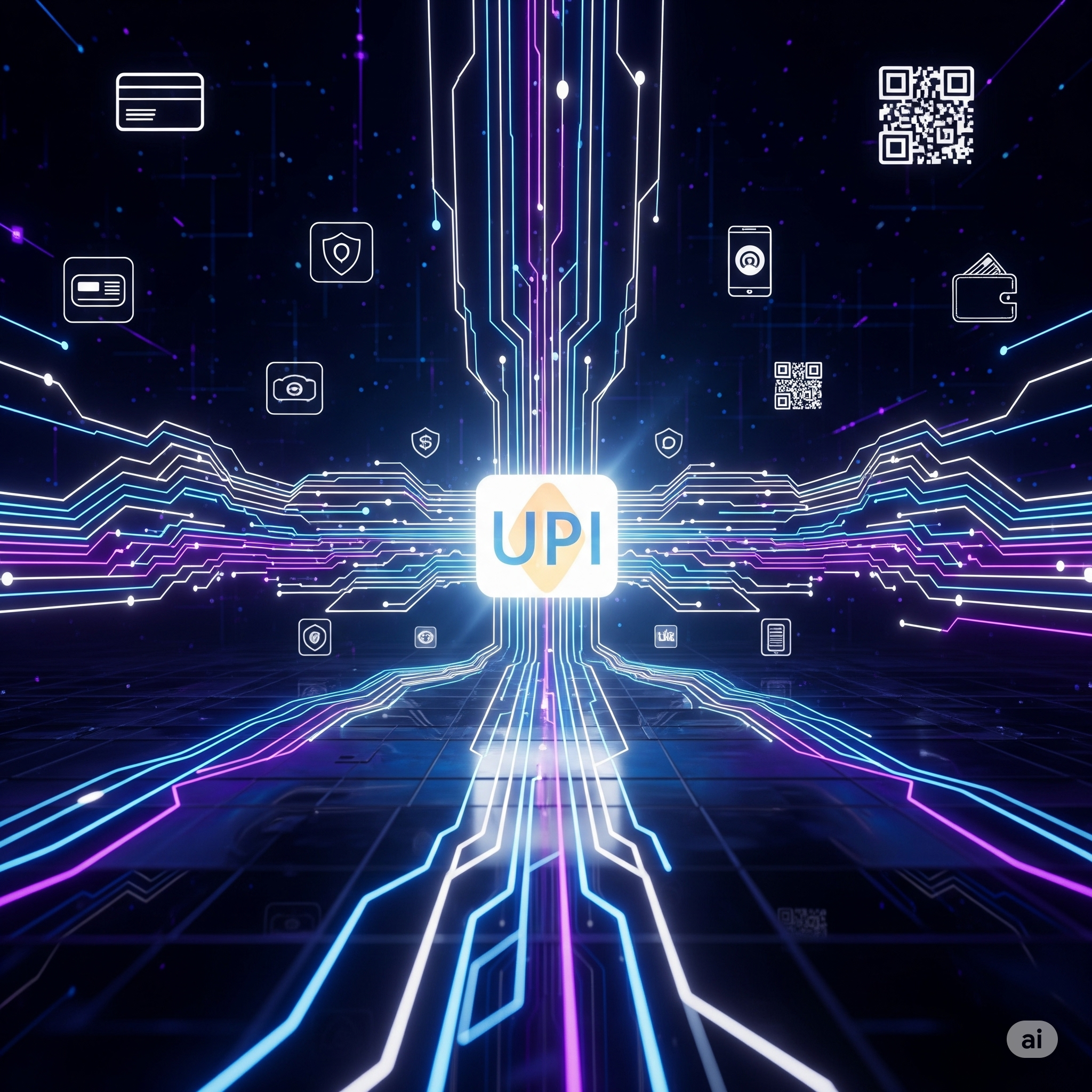Introduction
India’s financial ecosystem has undergone a remarkable transformation in the last decade. The shift from a predominantly cash-driven economy to a digitally empowered one has been fueled by innovations such as Unified Payments Interface (UPI) and other digital payment mechanisms. UPI, launched by the National Payments Corporation of India (NPCI) in 2016, has emerged as the backbone of India’s digital revolution, making financial transactions seamless, fast, and inclusive.
With over 10 billion transactions per month (as of 2024), UPI has made India the global leader in digital payments. The rise of fintech companies, mobile penetration, and government initiatives like Digital India have further accelerated this journey.
This article explores in detail how UPI and digital payments are reshaping India’s financial landscape, their impact on individuals and businesses, challenges faced, and the future outlook.
1. Evolution of Digital Payments in India
The journey of digital payments in India has been gradual but steady:
- Pre-2010s: Debit and credit cards, internet banking, and NEFT/RTGS/IMPS were the primary online payment methods. However, adoption was limited due to infrastructure challenges and lack of awareness.
- 2010-2015: Rise of mobile wallets (Paytm, Mobikwik, Freecharge) introduced Indians to cashless transactions, but wallets had limitations like KYC requirements and low interoperability.
- 2016 (Watershed Moment): The launch of UPI revolutionized payments by offering instant, interoperable, and mobile-first solutions. The demonetization drive in 2016 further accelerated digital adoption.
- 2017-2023: Massive growth in fintech innovation, QR code payments, government-backed BHIM app, and UPI integration into apps like Google Pay, PhonePe, and Paytm.
- 2024 onwards: India has become the largest digital payments market in the world, with UPI transactions outpacing debit/credit card transactions by a huge margin.
2. Understanding UPI (Unified Payments Interface)
UPI is a real-time payment system developed by NPCI that allows instant money transfer between bank accounts using a smartphone.
Key Features of UPI:
- Instant and 24/7 availability – transfers happen in seconds, even on holidays.
- Interoperable – works across all banks and apps.
- Simple identifiers – uses Virtual Payment Address (VPA) like name@upi, eliminating the need to share bank details.
- QR code payments – scan-and-pay for merchants.
- Security – backed by two-factor authentication and RBI guidelines.
- Multiple use cases – peer-to-peer transfers, bill payments, investments, and even IPO subscriptions.
3. Growth of UPI and Digital Payments
- Transaction Volume: UPI crossed 10 billion transactions per month in 2023.
- Adoption Rate: By 2024, over 300 million Indians actively use UPI for everyday payments.
- Merchant Payments: Even small vendors, tea stalls, and vegetable sellers accept UPI, bringing financial inclusion.
- Global Recognition: Countries like Singapore, UAE, France, and Sri Lanka have started adopting UPI-based systems for cross-border payments.
This exponential growth shows that UPI has not only revolutionized payments but has also transformed India into a digital-first economy.
4. Impact of UPI and Digital Payments on India’s Economy
4.1 Financial Inclusion
- Rural and semi-urban India, previously excluded from formal banking, are now integrated into the financial system.
- Women and youth have gained easier access to financial services.
4.2 Growth of MSMEs
- Small businesses now accept digital payments with zero infrastructure costs.
- UPI reduces dependency on cash, improving transparency and credit access.
4.3 Reduced Cash Dependency
- Digital payments lower cash handling costs for banks and the government.
- Increased transparency reduces black money circulation.
4.4 Boost to Digital Economy
- Growth in fintech startups and job opportunities.
- Increased trust in e-commerce and online services.
4.5 Government Revenue & Efficiency
- GST and tax collections improve due to digital trails.
- Government subsidies and DBT (Direct Benefit Transfer) reach beneficiaries without leakage.
5. Role of Fintechs and Banks
- Fintech Players: Google Pay, PhonePe, Paytm, Amazon Pay, BharatPe, and others dominate UPI transactions.
- Banks: Provide the backbone infrastructure for UPI transfers.
- NPCI: Acts as a regulatory and technical authority.
- Startups: Innovating with features like Buy Now Pay Later (BNPL), microloans, and UPI-linked credit cards.
Together, they have created a collaborative ecosystem that promotes innovation and customer convenience.
6. Challenges in UPI and Digital Payments
Despite its success, UPI faces several hurdles:
- Cybersecurity Threats: Rise in phishing, fraud, and fake UPI apps.
- Overdependence on a Few Players: Google Pay and PhonePe dominate the market, raising monopoly concerns.
- Technical Glitches: Server downtimes and transaction failures during peak hours.
- Low Financial Literacy: Many rural users still lack awareness about safe digital practices.
- Merchant Resistance: Some small merchants prefer cash to avoid transaction charges.
7. Government Policies and Support
The Indian government has actively supported digital payments through:
- Digital India Mission – promoting cashless economy.
- BHIM App – government’s UPI app.
- Zero MDR Policy (Merchant Discount Rate) – ensures merchants pay minimal fees.
- RBI Regulations – improving cybersecurity and promoting innovation.
- Global Expansion – signing agreements with countries for UPI adoption abroad.
8. UPI in the Global Context
- UPI is being integrated with Singapore’s PayNow for cross-border transfers.
- UAE, Bhutan, and France have adopted UPI QR code systems for Indian tourists.
- This positions India as a global leader in digital payments, setting benchmarks for other nations.
9. Future of UPI and Digital Payments in India
- Credit Integration: Linking UPI with credit cards and Buy Now Pay Later options.
- Offline Payments: UPI Lite and NFC-based payments for areas with weak internet.
- International Expansion: Wider adoption in global markets.
- AI & Blockchain Integration: For fraud detection and secure transactions.
- Rural Penetration: Deeper reach into villages with digital literacy programs.
- Financial Products on UPI: Insurance, mutual funds, and microloans through UPI apps.
10. Case Studies
Case Study 1: Street Vendors
Small tea stall owners in Tier-2 cities now use UPI for daily transactions, eliminating the need for cash handling.
Case Study 2: E-commerce Growth
Platforms like Amazon and Flipkart report that UPI accounts for over 60% of online transactions, driving customer trust.
Case Study 3: Government Schemes
Direct transfer of subsidies like LPG and PM-Kisan through UPI-linked bank accounts has reduced leakages.
Conclusion
UPI and digital payments have transformed India’s financial landscape, empowering millions of people, driving financial inclusion, and boosting the digital economy. What began as an alternative payment system has now become an integral part of daily life.
With strong government support, fintech innovation, and global recognition, UPI is set to remain at the core of India’s financial ecosystem. The journey ahead promises not only greater convenience but also a more transparent, inclusive, and resilient economy.
In short, India’s digital payments revolution is a model for the world, and UPI is its crown jewel.




